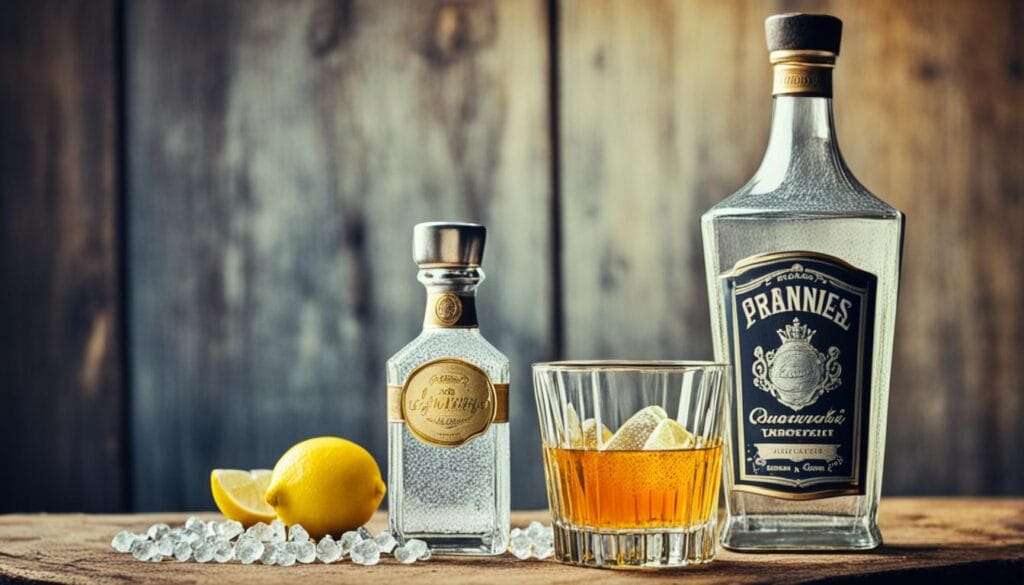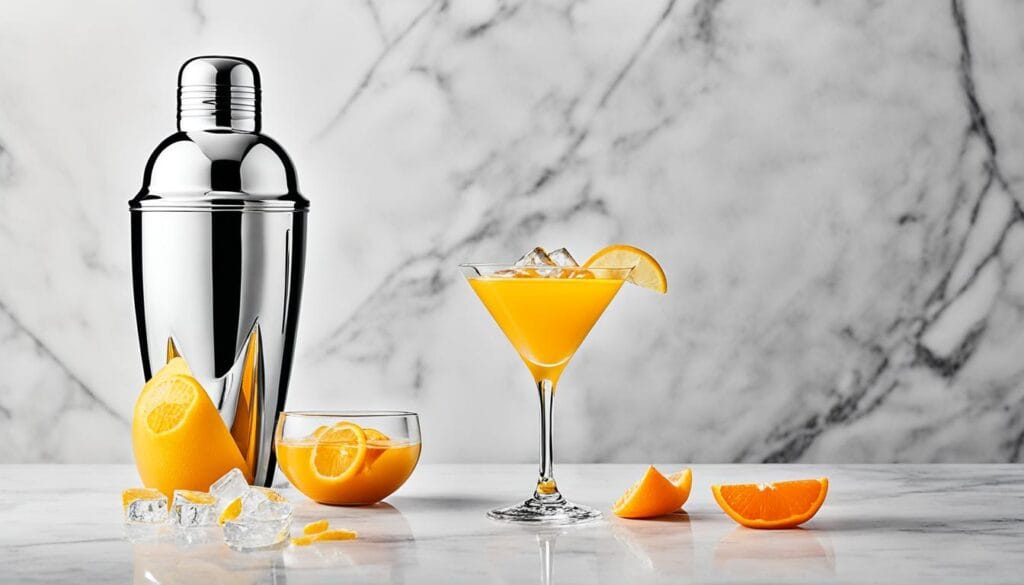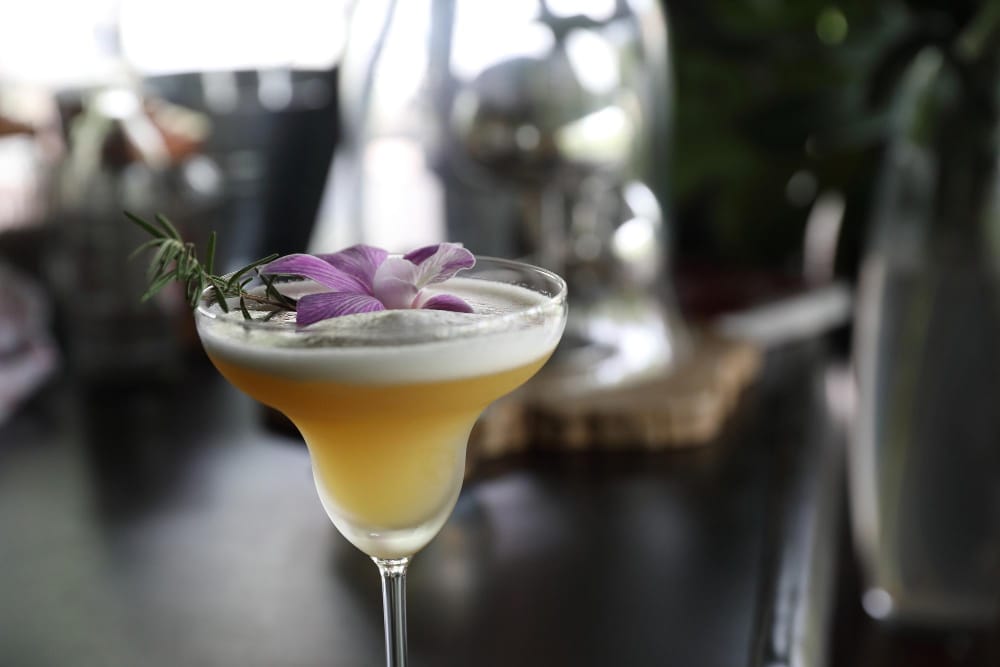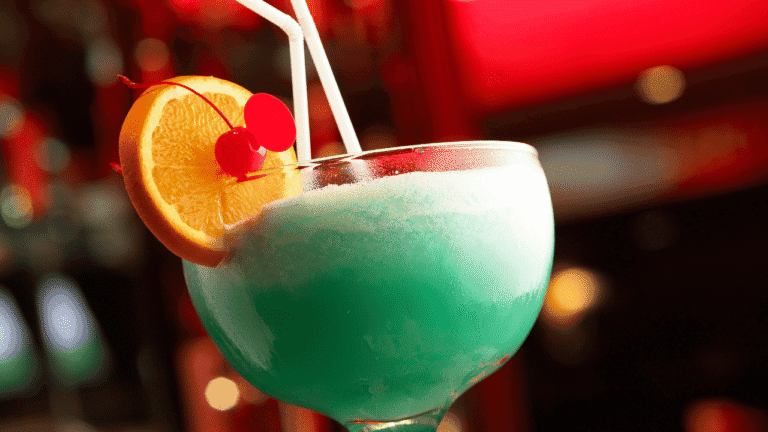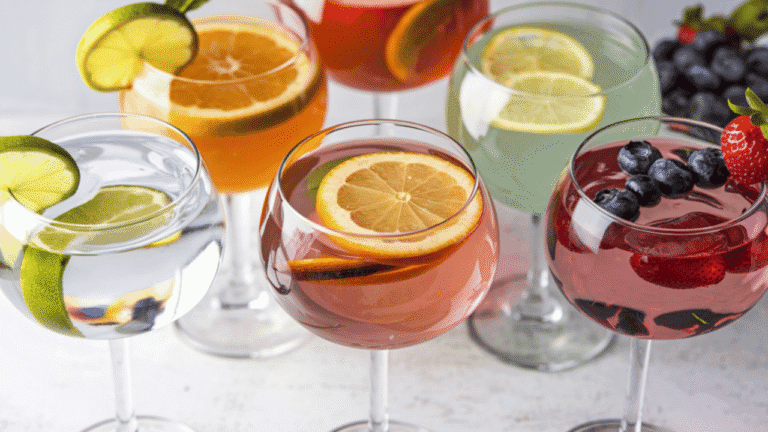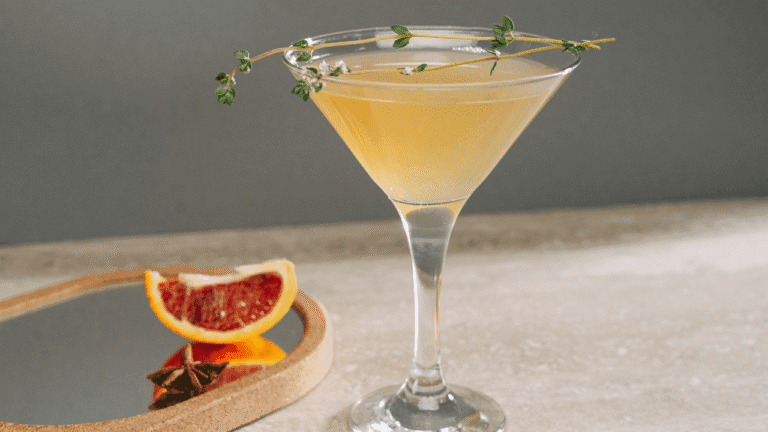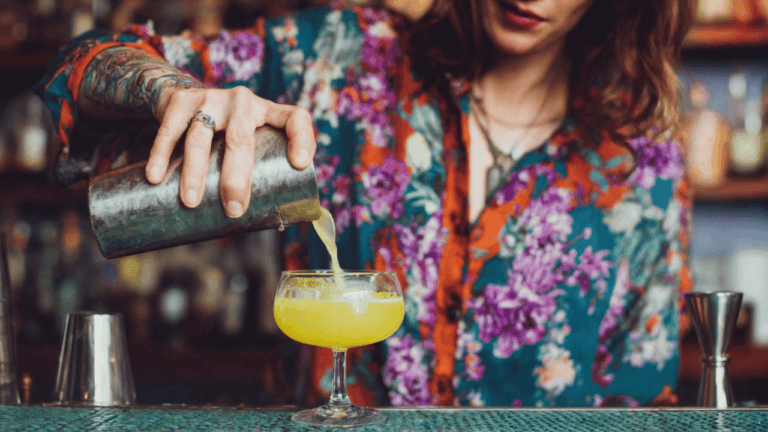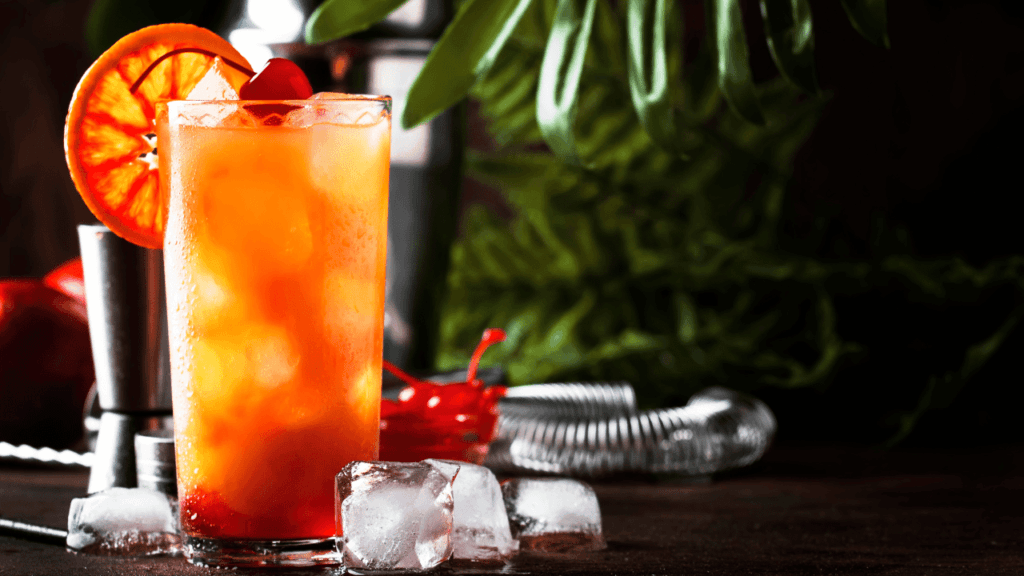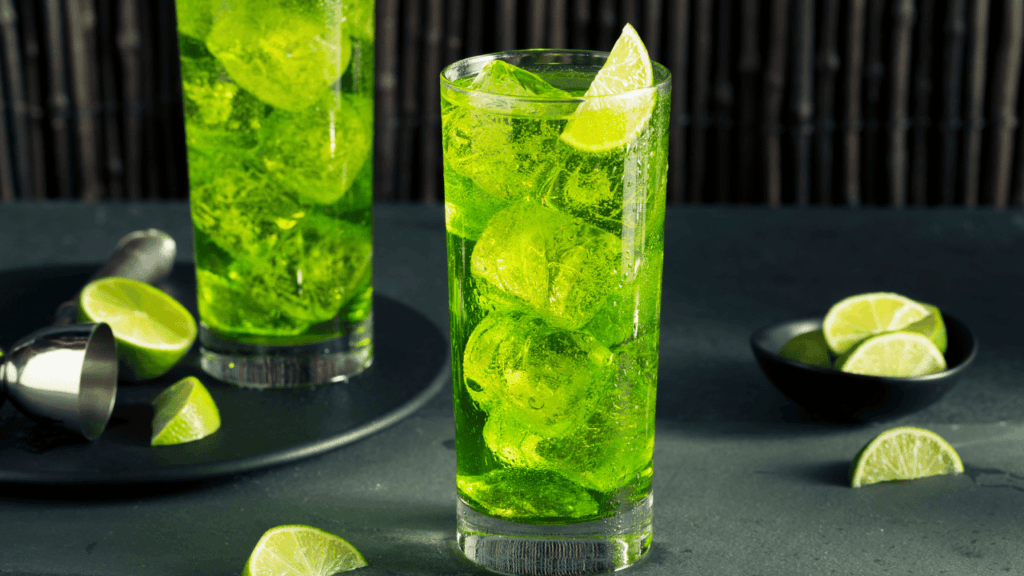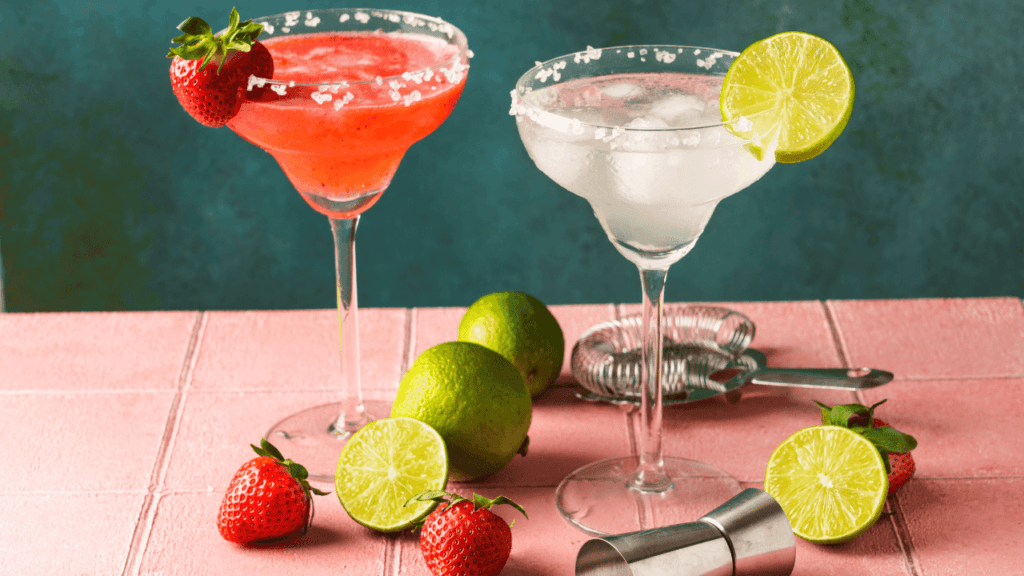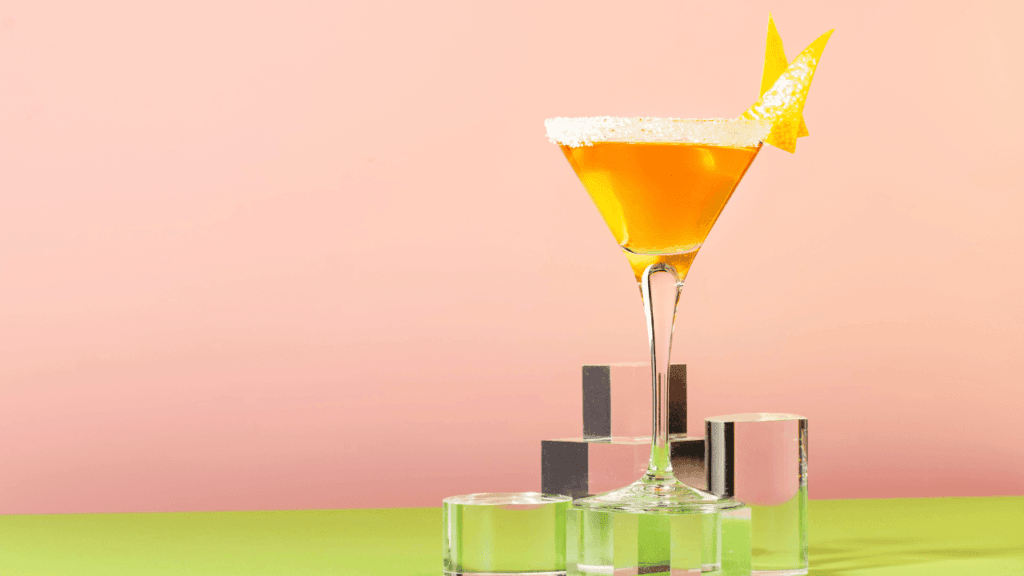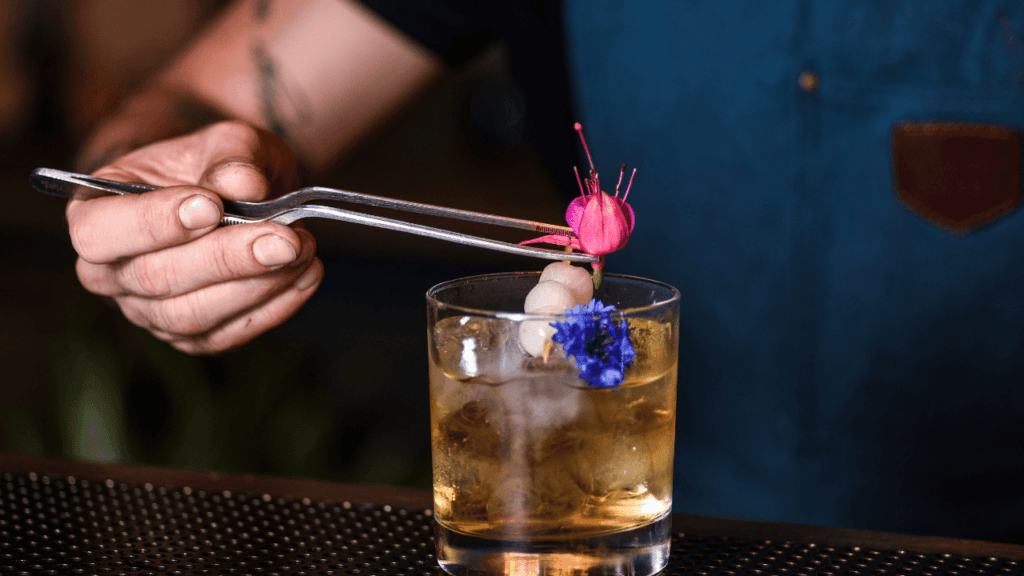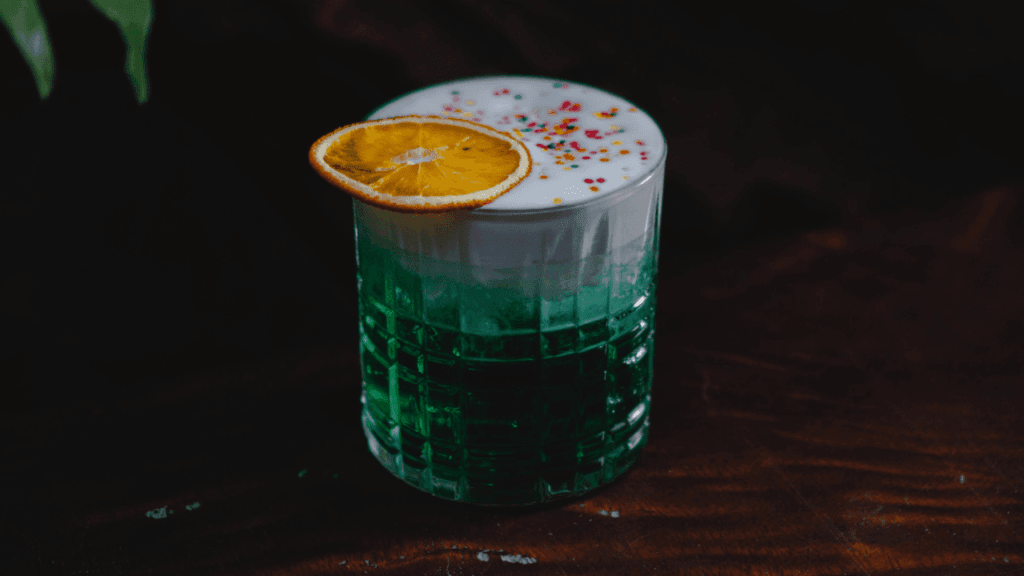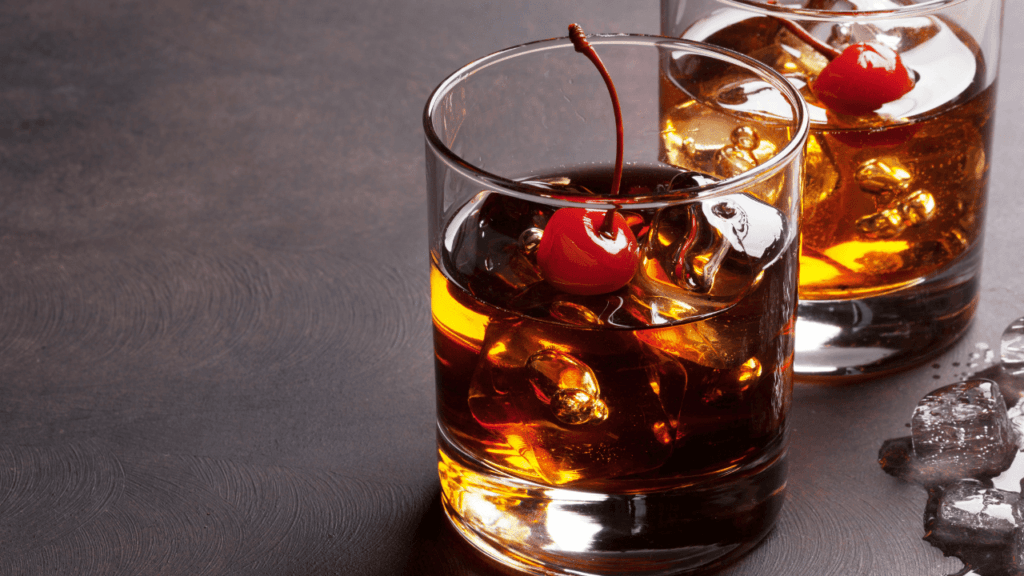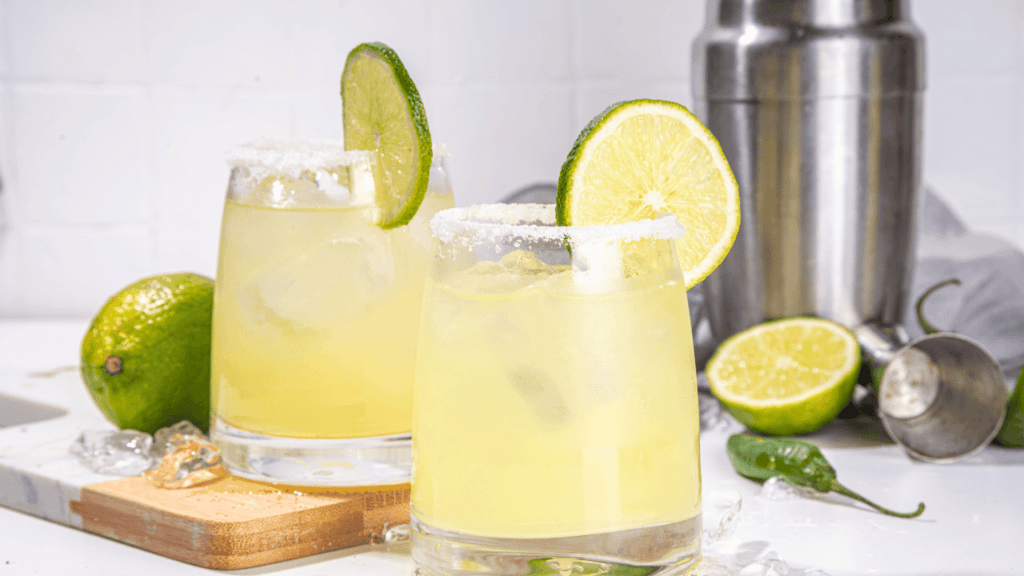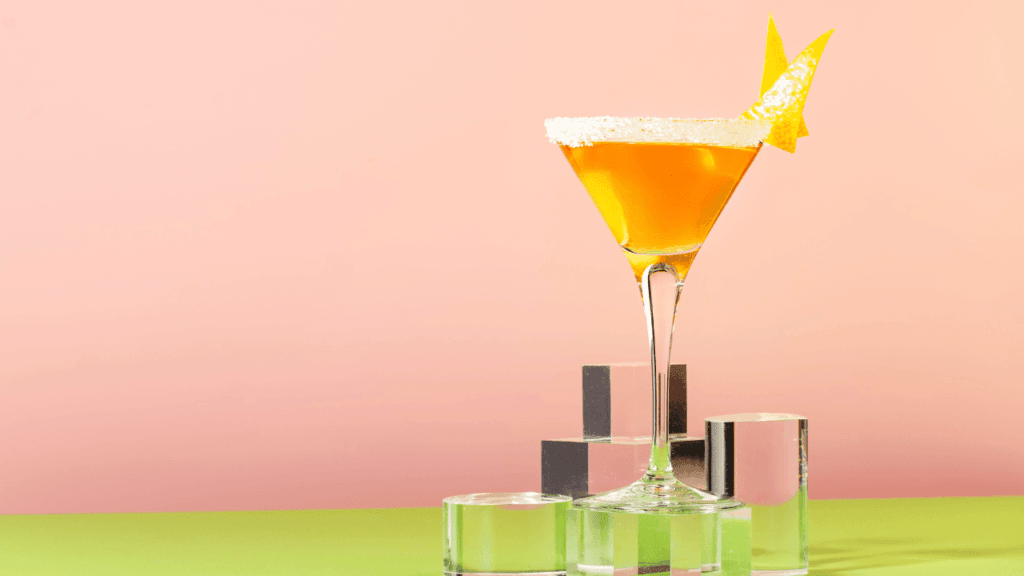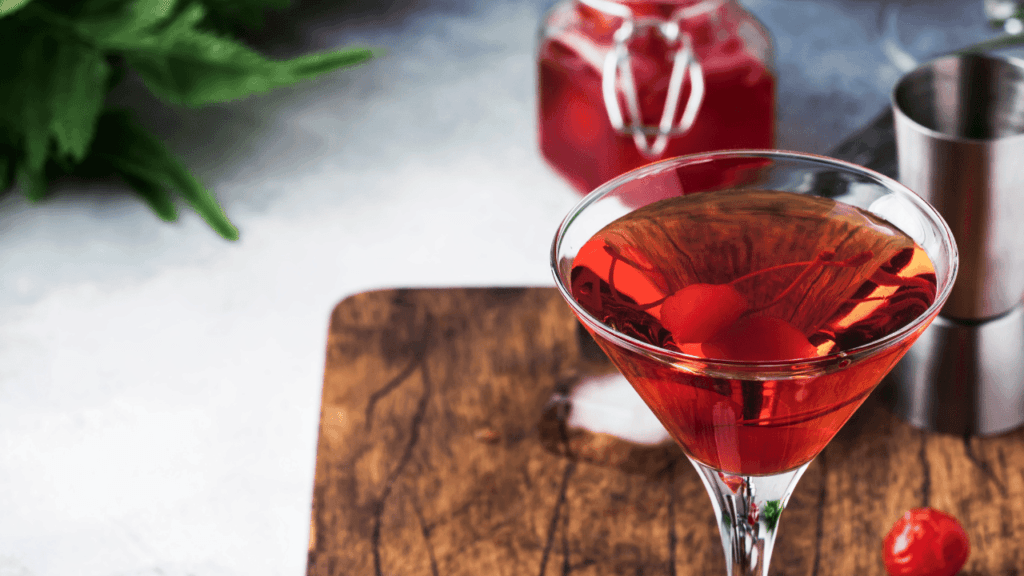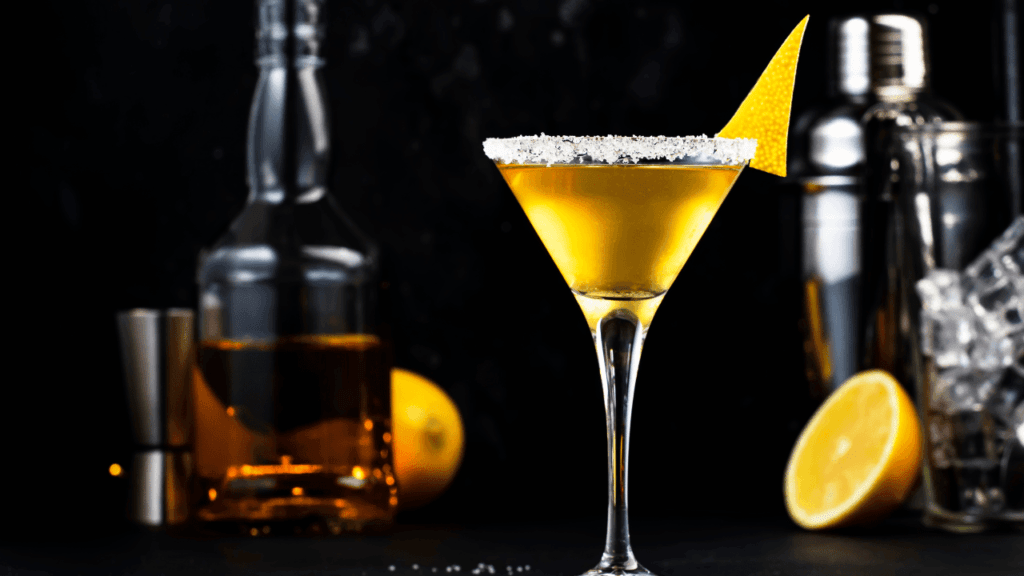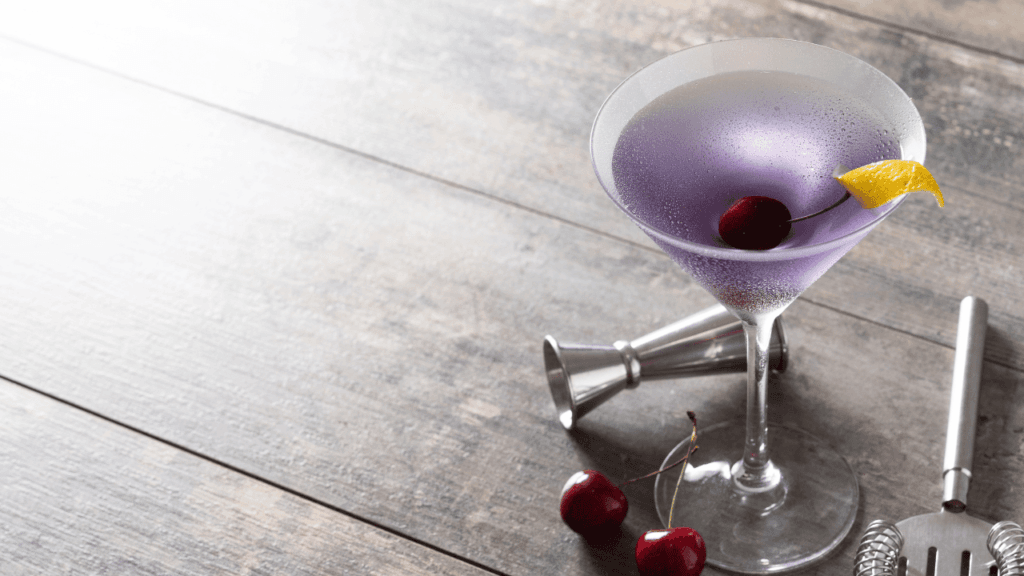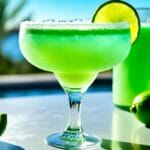Jump into the world of classic cocktails with the Sidecar recipe. It came to be towards the end of World War I or in the early 1920s. Since then, it has won many hearts. The 1922 publication boosted its fame, especially during the Prohibition. Learn to mix the velvety brandy with zesty fresh citrus. You’ll find it’s easy and elegant. No need for a big bar gear collection to make this Happy Hour favorite.
Key Takeaways
- Originated around World War I and became popular during Prohibition.
- First published recipe in 1922.
- Classic recipe includes brandy, Cointreau, and fresh lemon juice.
- Variations include Whiskey, Vodka, Spiced, and Amaro Sidecars.
- Balancing sweet, citrus, and sour flavors makes it popular in fall and winter.
Introduction to the Sidecar Cocktail
The traditional sidecar cocktail is known for its timeless grace. It brings together simplicity and class. It is made with brandy, orange liqueur, and lemon juice. It can use Cognac, Armagnac, or even bourbon sometimes.
Cointreau is often used for its orange flavor. You can also use other top-grade triple secs. Fresh lemon juice is a must, giving it a tangy kick. The drink usually has an alcohol level of 26%.
The drink is best in a chilled glass, with a sugar rim and a citrus twist. This not only looks good but enhances the taste. It’s perfect for any get-together.
Learning how to make a sidecar cocktail is fun and worthwhile. There are many variations you can try. Whether it’s the classic or a twist, it’s a favorite for many.
The sidecar cocktail is an excellent choice for any bar. Its simple nature and variety make it popular. It’s a favorite for both new and seasoned cocktail lovers.
History of the Sidecar Cocktail
The Sidecar cocktail’s history starts in the World War I era, with disputes over where it truly began. Its popularity soared during Prohibition in the United States. Even today, the tale of how it got its name remains a mystery, adding to its allure.
Origins in World War I
Stories from World War I mix fact and fiction about the Sidecar. Some say it was created by Pat MacGarry in London or Harry MacElhone in Paris. But one thing is sure: since then, it’s been a staple in bars everywhere.
Popularity During Prohibition
In the Prohibition era, the Sidecar stood out with its mix of brandy, triple sec, and lemon. It became a hit among those seeking sophisticated, secret sips. Its popularity during this difficult time is a key part of its legend.
Debated Reasons Behind the Name
The Sidecar drink name sparks much debate. Was it named after an early 20th-century motorcycle attachment, which shared its thrilling qualities? Or maybe after a customer who came by in a motorcycle sidecar. We may never know for sure, but the mystery only deepens its intrigue.
Ingredients Needed for a Sidecar
To make a delicious Sidecar cocktail, you need high-quality ingredients. They give the drink its celebrated flavor. This includes top-notch brandy or Cognac, a fine orange liqueur, and freshly squeezed lemon juice. You can also add simple syrup for a sweeter taste. Let’s take a closer look at each ingredient.
Quality Brandy or Cognac
A good Sidecar starts with top-shelf brandy, often Cognac. Choices like VSOP Cognac, Armagnac, or California brandy work well. The brand of spirit you choose really shapes the cocktail’s taste. Brands like Hennessy, Pierre Ferrand, or Rémy Martin offer a rich beginning.
Orange Liqueur Options
The secret to the Sidecar’s unique taste is the orange liqueur. Many choose Cointreau for its mix of sweetness and bright orange flavor. You can also try Grand Marnier or other high-quality orange liqueurs for a twist. The orange liqueur defines the drink’s classic taste.
Fresh Lemon Juice
Freshly squeezed lemon juice is a must for the Sidecar. It adds a sharpness that blends perfectly with the sweet orange liqueur and the brandy’s depth. One lemon should give about 1 3/4 ounces of juice, enough for two drinks. This ensures the cocktail is zesty and fresh.
Optional Simple Syrup
If you like your Sidecar a little sweeter, add some simple syrup. It not only makes the lemon less tart but also allows you to adjust the cocktail to your taste. Changing the sweet and sour balance helps you find your perfect drink.
Choosing the Right Glassware
Selecting the right glass can make a cocktail more enjoyable. For example, a Sidecar looks best in a coupe glass. This glass type makes the drink look good and keeps it from spilling.
Coupe Glass
The Sidecar cocktail looks great in a coupe glass. This glass has a unique, elegant look. It’s also more stable than a martini glass. It’s great for other cocktails too, like the Whiskey Sour and Gimlet. Because it’s smaller, drinks don’t get too warm and you don’t drink too much.
Martini Glass
The martini glass is another good choice for a Sidecar. It has a long stem and a conical shape. This glass shows off the cocktail’s smell. It’s perfect for cocktails without ice, like a Martini or Cosmopolitan. Both the coupe and martini glasses are great for cocktails. They add a touch of class to the Sidecar.
| Glass Type | Recommended Cocktails | Capacity | Benefits |
|---|---|---|---|
| Coupe Glass | Sidecar, Whiskey Sour, Gimlet | 5-7 ounces | Less prone to tipping, elegant presentation |
| Martini Glass | Martini, Cosmopolitan | 6-8 ounces | Enhances aroma, prevents warming |
How to Make a Sidecar Cocktail
Making a Sidecar is easy yet elegant. It’s all about getting the right mix with a few ingredients. Even those new to cocktails can make it. Home bar essentials are all you need for this classic drink.
Start by gathering the ingredients for a Sidecar. You’ll need 2 oz Cognac, 1 oz Cointreau, and 1 oz lemon juice. Good Cognac like Hennessy or Rémy Martin makes a big difference. These items create a perfect blend of taste.
Next, you need to mix everything just right. Most recipes suggest equal parts Cognac, Cointreau, and lemon juice. But a ratio of 2:1:1 is more popular, making the drink well-rounded. If you like it sweeter, adjust by adding more Cointreau.
- Total Preparation Time: 5 minutes
- Active Preparation Time: 1 minute
- Serving Size: 1 serving
- Ice Shaking Time: Approximately 10 seconds
Now, let’s mix the Sidecar. Here are the key steps to follow:
- Shake It Up: Add Cognac, Cointreau, and lemon juice to a shaker with ice.
- Chill to Perfection: Shake well for 10 seconds. This makes the drink cold just right.
- Optional Sugar Rim: Before adding the mix, you can sugar the glass rim for extra sweetness and a classic look.
- Serve: Pour the mix in a chilled glass and enjoy.
With the right tools and skills, anyone can perfect the Sidecar. This mix of Cognac, Cointreau, and lemon is a classic. Make it well for a delightful and balanced drink. So, get your ingredients and make a Sidecar to enjoy the taste of classic cocktails.
| Ingredient | Amount |
|---|---|
| Cognac | 2 oz |
| Cointreau | 1 oz |
| Fresh Lemon Juice | 1 oz |
Detailed Step-by-Step Instructions
Starting on the journey to make a top-notch Sidecar cocktail is key. Follow these step by step instructions and get the perfect drink every time.
Preparing the Glass
Begin by picking a coupe or martini glass. Wet the rim with a lemon wedge. Then dip it in superfine sugar for a sweet, elegant touch.
This step boosts how the drink looks and tastes at first sip.
Measuring Ingredients
Being exact in measuring is very important. Use a jigger to measure 2 ounces of your choice of brandy. Armagnac, or a top-notch California brandy work well.
Next, add 1 ounce of Cointreau and 3/4 ounce of tart lemon juice. Using quality ingredients ensures your cocktail tastes great.
Shaking the Cocktail
Pour your ingredients into a shaker with ice. Shake it hard for about 15 seconds. This mixes, dilutes, and chills the drink perfectly. It makes the taste and consistency just right.
Garnishing the Drink
After shaking, strain the mix into your glass. Top it off with a twist of lemon or orange for a classy look.
This garnish also adds a hint of fresh citrus. It makes the whole drinking experience better.
| Ingredient | Quantity |
|---|---|
| VSOP Cognac, Armagnac, or good California brandy | 2 ounces |
| Cointreau | 1 ounce |
| Fresh Lemon Juice | 3/4 ounce |
With these cocktail mixing techniques, you’ll make a Sidecar to remember. It will impress both you and your friends with its taste and look.
Tips for Plating and Presentation
Serving a cocktail isn’t just about taste. The look is also very important. Using the right garnishes and plating can turn a basic mix into an amazing treat. Here are some tips to make your Sidecar cocktail look outstanding.
- Perfect Sugared Rim: A sugared rim looks great and adds a nice crunch. Wet the rim with lemon juice, then dip it in fine sugar for a special touch.
- Garnishing Techniques: Try fun garnishes like a lemon twist or a thin orange peel. They bring color and a fresh smell to your drink.
- Glassware Selection: Use a coupe or martini glass for your Sidecar. They make the drink look classy, which makes it feel special.
- Attention to Detail: Clear, pure ice is a must to keep your drink from getting cloudy. It shows the drink’s true elegance.
The Sidecar cocktail has been around since 1922. It’s mentioned in important cocktail books. Its style is linked to the brandy crusta, making how you serve it very important.
Take a look at places like Belroy’s Bijou in Antwerp. They are known for their new plating ideas. They became the best in Belgium soon after opening. Such visits can give you new ideas for plating your own Sidecar cocktails.
Sidecar Cocktail Variations
The Sidecar cocktail is very versatile, which makes it great for different tastes. Adding a modern twist can refresh its long history. Let’s look at some exciting versions of the Sidecar that take it to new levels.
Whiskey Sidecar
The Whiskey Sidecar switches the usual Cognac for whiskey. This change brings a richer taste. It still keeps the mix of tangy citrus and sweet orange, perfect for whiskey fans.
Vodka Sidecar
The Vodka Sidecar is a light and refreshing option. Using vodka makes the drink cleaner but keeps it vibrant with lemon and orange flavors. It’s perfect for those who like their drinks on the mild side.
Spiced Sidecar
The Spiced Sidecar adds cozy warmth with spices like cinnamon and nutmeg. It’s great for the colder seasons. This version stays elegant while adding a fun, seasonal twist.
Amaro Sidecar
The Amaro Sidecar adds Amaro for a complex, bittersweet taste. This twist is for those who prefer strong, flavorful drinks. The Amaro brings a sophisticated depth to the cocktail.
These variations show how the Sidecar can be adapted for new tastes. Mixing up the spirits and spices creates countless unique drinks. This keeps the Sidecar exciting for cocktail lovers everywhere.
Serving Suggestions for Different Occasions
The Sidecar cocktail is elegant and fits various social scenes. It adds a touch of classic style to any event you host. From small group parties to big celebrations, its versatility shines through.
Pair the Sidecar with artisanal cheeses and charcuterie for small gatherings. The mix of cognac, Cointreau, and lemon juice complements these foods well. It’s perfect for dinner parties or cozy nights at home. Serve it in elegant glasses to top off the experience.
Making pitcher-sized Sidecars is great for bigger parties. Just mix 12 ounces cognac, 6 ounces Cointreau, and 6 ounces lemon juice for 8 servings. Use freshly squeezed lemon to keep it bright.
For special events, add a sugared rim to your Sidecar. This step not only looks good but also tastes great with the drink’s citrus notes. Offer multiple recipe twists, like the Blackberry and Spiced Sidecars, to please a variety of guests.
Customize your Sidecar for different themes using seasonal garnishes. A touch of orange peel in winter or fresh mint in the summer can spruce it up. Be creative to make your event memorable with the Sidecar.
In short, the Sidecar cocktail is a classy pick for any event. Its mix of cognac and citrus makes it a hit. Try different garnishes and flavors to make it even more attractive. Make your parties unforgettable with the Sidecar.
Common Mistakes to Avoid
Making a high-quality cocktail can take focus, especially for a Sidecar. To avoid common errors and make the best drink, be alert. Your efforts will pay off.
Using Bottled Lemon Juice
Fresh lemon juice is a must for great cocktail taste. Bottled juice is not as fresh or bright. Squeeze lemons just before making your drink for the best result.
Skipping the Sugar Rim
Don’t forget the sugar rim. It might seem small, but it’s key. It adds sweetness that balances the lemon’s tartness and the Cognac’s depth. This makes your cocktail tasty and well-rounded.
Choosing the Wrong Brandy
Selecting the right brandy is crucial too. Try to use a VSOP Cognac from respected brands like St. Remy or Raynal. This ensures your cocktail combines well, offering a delightful symphony of flavors.
By avoiding these mistakes, you can uplift your cocktail game. When mixing a Sidecar next, keep these hints in mind. You’ll notice a big difference in taste and appearance, pleasing yourself and your guests.
Conclusion
The Sidecar cocktail has a fascinating past and a charm that lasts through time. Exploring its beginnings in places like the Ritz Hotel in Paris or Buck’s Club in London is a journey. Yet, just perfecting its classic mix with brandy or Cognac, orange liqueur, and lemon juice can be rewarding.
There are also new takes on the Sidecar, like the Whiskey Sidecar and Blood Orange Sidecar. This shows it can fit your tastes. Served in a chilled glass with a lemon twist, it’s perfect for many events, from fancy parties to chill hangouts.
What makes the Sidecar special isn’t just its simple, classy taste. It’s also about the stories of how it was born. Though opinions differ, from Robert Vermeire’s 1922 recipe to Harry McElhone’s take, the drink’s legend lives on. With this knowledge, you can impress with your bartending skills. The Sidecar reflects the beauty and depth a good cocktail can bring. Here’s to enjoying your journey in mixing drinks!


